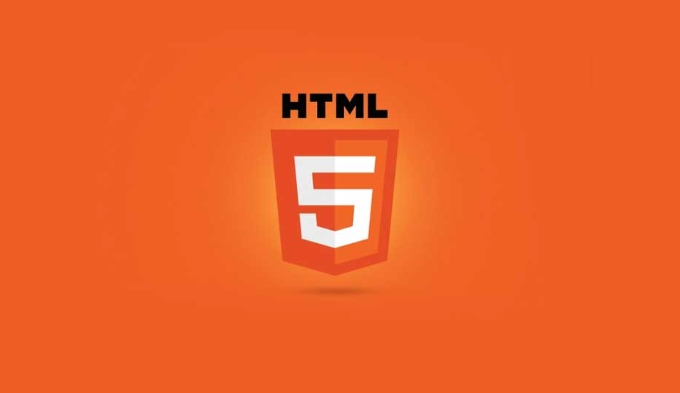The correct way to use the <base> tag is to place it in the
section, specify the base address of all relative URLs of the page, and set the link opening method. For example: <base href="https://example.com/" target="_blank"> means that the relative link is parsed from the href as the starting point, and the link opens in a new window by default. Suitable scenarios include: 1. Unified management of multi-page resource paths; 2. Simplified configuration when deploying to sub-paths; 3. Control the link opening method. Frequently asked questions include: 1. Path error causes resource loading failure; 2. Affects anchor jump behavior; 3. SEO and compatibility risks. It is recommended that the development stage is not enabled. When deploying, decide whether to add it according to the structure, and give priority to controlling link behavior in other ways. Check for 404 errors during testing. SPA projects usually do not need to be used.
In web development, the HTML5 <base> tag is actually a very practical but easily overlooked element. Although it will not be displayed directly on the page, it can affect the loading method and link behavior of the entire website resource. If you are dealing with multi-page applications, static sites, or projects that require unified path management, it can be helpful to understand how <base> is used.
 ` element in web development" />
` element in web development" /> How to use the <base> tag correctly?
The <base> tag is usually placed in the section of an HTML document and is used to specify the base address of all relative URLs on the page. Its basic writing is as follows:
 ` element in web development" />
` element in web development" /><base href="https://example.com/" target="_blank">
The above code means:
- Relative links in all pages will be parsed from
https://example.com/as the starting point; - All links in the page (such as the
<a></a>tag) will open in a new window by default (becausetarget="_blank"is set).
It should be noted that a page can only have one <base> tag, and once set, it will affect the behavior of all relative paths within the page.
 ` element in web development" />
` element in web development" /> In which scenarios are suitable for <base> ?
Unified management of resource paths for multiple pages
If you are developing a multi-page website, CSS, JS and image resources are placed in a fixed directory structure. Setting a unified root path by<base>can prevent each page from writing a full path.Simplify path configuration when deploying to subpaths
For example, if your website is deployed athttps://example.com/project/instead of the domain name root path, setting<base href="/project/">can make the relative path simpler without frequent prefixes.Control link opening method
If you want all external links to open in the new tab, in addition to addingtarget="_blank"to each<a></a>, you can also use<base>to control it to reduce duplicate code.
What are the common questions when using <base> ?
Although <base> is very convenient, there are some pitfalls to pay attention to in actual use:
Path error causes resource loading to fail
Once the wronghrefis set, all relative paths will be parsed based on the error basic path, which may cause CSS, JS, pictures and other resources to be unable to be found.Influence anchor jump behavior
If there is an anchor link in the page (such as#section1), the browser may try to splice the current URL on the base path after using<base>, causing a jump exception.Carefulness in SEO and accessibility
Although search engines can usually handle<base>, path confusion can also affect crawler crawling. In addition, some old devices or auxiliary tools may not support<base>well.
Some suggestions for actual use
- Before using
<base>, make sure you are clear about the path relationships of all resources; - Try not to enable
<base>during the development stage, and then decide whether to add it based on the server structure during deployment; - If you only want to unify the link opening method, you can consider using CSS or JS control instead of relying on
targetattribute of<base>; - During the test, please check whether there are 404 errors caused by path changes, especially pictures and script files;
- For SPA (single-page application),
<base>is generally not needed, but if deployed on a subpath, you can use configuring the routed base to replace it.
Basically that's it. Rational use of <base> can make path management clearer, but it is also easy to cause global problems due to small mistakes, so be extra careful when using them.
The above is the detailed content of Using HTML5 `` element in web development. For more information, please follow other related articles on the PHP Chinese website!

Hot AI Tools

Undress AI Tool
Undress images for free

Undresser.AI Undress
AI-powered app for creating realistic nude photos

AI Clothes Remover
Online AI tool for removing clothes from photos.

Clothoff.io
AI clothes remover

Video Face Swap
Swap faces in any video effortlessly with our completely free AI face swap tool!

Hot Article

Hot Tools

Notepad++7.3.1
Easy-to-use and free code editor

SublimeText3 Chinese version
Chinese version, very easy to use

Zend Studio 13.0.1
Powerful PHP integrated development environment

Dreamweaver CS6
Visual web development tools

SublimeText3 Mac version
God-level code editing software (SublimeText3)

Hot Topics
 Audio and Video: HTML5 VS Youtube Embedding
Jun 19, 2025 am 12:51 AM
Audio and Video: HTML5 VS Youtube Embedding
Jun 19, 2025 am 12:51 AM
HTML5isbetterforcontrolandcustomization,whileYouTubeisbetterforeaseandperformance.1)HTML5allowsfortailoreduserexperiencesbutrequiresmanagingcodecsandcompatibility.2)YouTubeofferssimpleembeddingwithoptimizedperformancebutlimitscontroloverappearanceand
 Audio and Video: can i record it?
Jun 14, 2025 am 12:15 AM
Audio and Video: can i record it?
Jun 14, 2025 am 12:15 AM
Yes,youcanrecordaudioandvideo.Here'show:1)Foraudio,useasoundcheckscripttofindthequietestspotandtestlevels.2)Forvideo,useOpenCVtomonitorbrightnessandadjustlighting.3)Torecordbothsimultaneously,usethreadinginPythonforsynchronization,oroptforuser-friend
 Adding drag and drop functionality using the HTML5 Drag and Drop API.
Jul 05, 2025 am 02:43 AM
Adding drag and drop functionality using the HTML5 Drag and Drop API.
Jul 05, 2025 am 02:43 AM
The way to add drag and drop functionality to a web page is to use HTML5's DragandDrop API, which is natively supported without additional libraries. The specific steps are as follows: 1. Set the element draggable="true" to enable drag; 2. Listen to dragstart, dragover, drop and dragend events; 3. Set data in dragstart, block default behavior in dragover, and handle logic in drop. In addition, element movement can be achieved through appendChild and file upload can be achieved through e.dataTransfer.files. Note: preventDefault must be called
 Adding Audio and Video to HTML: Best Practices and Examples
Jun 13, 2025 am 12:01 AM
Adding Audio and Video to HTML: Best Practices and Examples
Jun 13, 2025 am 12:01 AM
Use and elements to add audio and video to HTML. 1) Use elements to embed audio, make sure to include controls attributes and alternate text. 2) Use elements to embed video, set width and height attributes, and provide multiple video sources to ensure compatibility. 3) Add subtitles to improve accessibility. 4) Optimize performance through adaptive bit rate streaming and delayed loading. 5) Avoid automatic playback unless muted, ensuring user control and a clear interface.
 What is the purpose of the input type='range'?
Jun 23, 2025 am 12:17 AM
What is the purpose of the input type='range'?
Jun 23, 2025 am 12:17 AM
inputtype="range" is used to create a slider control, allowing the user to select a value from a predefined range. 1. It is mainly suitable for scenes where values ??need to be selected intuitively, such as adjusting volume, brightness or scoring systems; 2. The basic structure includes min, max and step attributes, which set the minimum value, maximum value and step size respectively; 3. This value can be obtained and used in real time through JavaScript to improve the interactive experience; 4. It is recommended to display the current value and pay attention to accessibility and browser compatibility issues when using it.
 How can you animate an SVG with CSS?
Jun 30, 2025 am 02:06 AM
How can you animate an SVG with CSS?
Jun 30, 2025 am 02:06 AM
AnimatingSVGwithCSSispossibleusingkeyframesforbasicanimationsandtransitionsforinteractiveeffects.1.Use@keyframestodefineanimationstagesforpropertieslikescale,opacity,andcolor.2.ApplytheanimationtoSVGelementssuchas,,orviaCSSclasses.3.Forhoverorstate-b
 HTML audio and video: Examples
Jun 19, 2025 am 12:54 AM
HTML audio and video: Examples
Jun 19, 2025 am 12:54 AM
Audio and video elements in HTML can improve the dynamics and user experience of web pages. 1. Embed audio files using elements and realize automatic and loop playback of background music through autoplay and loop properties. 2. Use elements to embed video files, set width and height and controls properties, and provide multiple formats to ensure browser compatibility.
 What is WebRTC and what are its main use cases?
Jun 24, 2025 am 12:47 AM
What is WebRTC and what are its main use cases?
Jun 24, 2025 am 12:47 AM
WebRTC is a free, open source technology that supports real-time communication between browsers and devices. It realizes audio and video capture, encoding and point-to-point transmission through built-in API, without plug-ins. Its working principle includes: 1. The browser captures audio and video input; 2. The data is encoded and transmitted directly to another browser through a security protocol; 3. The signaling server assists in the initial connection but does not participate in media transmission; 4. The connection is established to achieve low-latency direct communication. The main application scenarios are: 1. Video conferencing (such as GoogleMeet, Jitsi); 2. Customer service voice/video chat; 3. Online games and collaborative applications; 4. IoT and real-time monitoring. Its advantages are cross-platform compatibility, no download required, default encryption and low latency, suitable for point-to-point communication






